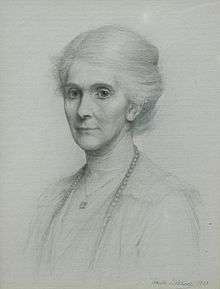George Lyttelton, 4th Baron Lyttelton

George William Lyttelton, 4th Baron Lyttelton KCMG DL FRS (31 March 1817 – 19 April 1876), was a British aristocrat and Conservative politician from the Lyttelton family. He was chairman of the Canterbury Association, which encouraged British settlers to move to New Zealand.
Early life
Lyttelton was the eldest son of William Lyttelton, 3rd Baron Lyttelton, and Lady Sarah Spencer, daughter of George John Spencer, 2nd Earl Spencer. He was educated at Eton and Trinity College, Cambridge.[1] He succeeded his father as fourth Baron Lyttelton in 1837 and took his seat in the House of Lords on his 21st birthday a year later. The Lyttelton seat is Hagley Hall in Worcestershire.
Political career
In January 1846 he was appointed Under-Secretary of State for War and the Colonies in the Conservative government of Sir Robert Peel, a post he held until the government fell in June of the same year. Lyttelton was also Lord Lieutenant of Worcestershire from 1839 to 1876 and the first President of Birmingham and Midland Institute in 1854. Moreover, he founded the region of Canterbury, New Zealand with Anglican colonists. The port of Canterbury bears his name. He was president of the British Chess Association at the time of the Staunton–Morphy controversy in 1858.[2] He was appointed a Knight Commander of the Order of St Michael and St George (KCMG) in the 1869 Birthday Honours.[3]
Family

by Frank Bernard Dicksee


Lord Lyttelton married, firstly in 1839, Mary Glynne, daughter of Sir Stephen Glynne, 8th Baronet, and sister-in-law of William Ewart Gladstone. They had eight sons and four daughters:
- Meriel Sarah (1840-1925) married John Gilbert Talbot and was the mother of Meriel Talbot
- Lucy Caroline (1841-1925), married Lord Frederick Cavendish and the Lucy Cavendish College at Cambridge is named after her.
- Charles George (1842-1922) succeeded his father
- Rev Albert Victor Lyttelton (1844-1928), Headmaster of St Andrew's School, Bloemfontein (1884-1885)
- Neville Gerald (1845-1931), became a General in the British Army
- George William Spencer (1847-1913), was a British civil servant and private secretary to Gladstone
- Lavinia (1849-1939), married Right Rev Edward Stuart Talbot
- May (1850-1875), whom Arthur Balfour had hoped to marry. Balfour remained a bachelor thereafter
- Arthur Temple (1852-1903), became an Anglican Bishop
- Robert Henry (1854-1939), cricketer
- Edward (1855-1942), became headmaster of Eton College
- Alfred (1857-1913), sportsman and politician
After Mary's death in 1857 Lyttelton married, secondly, Sybella Harriet Clive, daughter of George Clive MP, in 1869. They had three daughters, the youngest of whom, Hester Margaret, married Cyril Alington, also headmaster of Eton, and Dean of Durham.
Lyttelton committed suicide at the age of 59 by throwing himself down the stairs in a London house.[4] He was succeeded by his eldest son Charles, who later also inherited the viscounty of Cobham. Lady Lyttelton died in 1900.
Notes
- ↑ "Lyttelton, George William (LTLN833GW)". A Cambridge Alumni Database. University of Cambridge.
- ↑ "The life and chess of Paul Morphy: extra information". Retrieved 2008-08-16.
- ↑ The London Gazette: no. 23512. p. 3750. 1 July 1869.
- ↑ Sheila Fletcher, Victorian Girls: Lord Lyttelton's Daughters
References
- Kidd, Charles, Williamson, David (editors). Debrett's Peerage and Baronetage (1990 edition). New York: St Martin's Press, 1990,
- Leigh Rayment's Peerage Pages
- George Lyttelton profile, CricketArchive.com; accessed 2 April 2016.
External links
- Hansard 1803–2005: contributions in Parliament by Lord Lyttelton
| Political offices | ||
|---|---|---|
| Preceded by George William Hope |
Under-Secretary of State for War and the Colonies 1846 |
Succeeded by Benjamin Hawes |
| Honorary titles | ||
| Preceded by The Lord Foley |
Lord Lieutenant of Worcestershire 1839–1876 |
Succeeded by The Earl Beauchamp |
| Peerage of Great Britain | ||
| Preceded by William Lyttelton |
Baron Lyttelton 1837–1876 |
Succeeded by Charles Lyttelton |